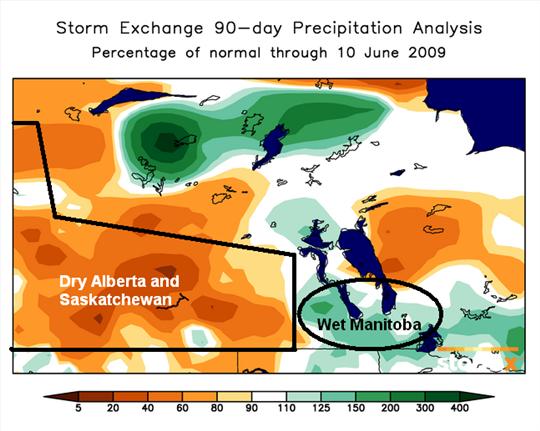www.stormx.com/agriculture
© StormX
The Canadian Wheat Board's annual crop outlook issued Thursday featured a significant reduction in expected canola production. Last year, 12.6 million metric tons of canola was harvested across the Canadian Prairies. This year, however, canola production is estimated to be just 10.2MMT,
nearly 20% less than 2008. The yield is expected to be 29.3 bushels per acre.
For Alberta and Saskatchewan, the main culprit in the low canola production expectations is a combination of
drought and below normal temperatures since March. In southern Manitoba, however, spring flooding has worked in concert with cool temperatures to negatively impact the canola crop.
Bruce Burnett of the Canadian Wheat Board states that most farmland in the Canadian Prairies has
received just half of the heat needed to grow a crop this year. In fact, many canola farmers have reported that frost last week is forcing them to reseed a portion of the crop. In the drought-stricken regions, poor soil moisture is making the reseeding process very difficult leading farmers to consider abandoning their fields. In Manitoba, the flooding has also slowed the planting process. With planting extending into June, the canola crop runs the risk of a late harvest with similar frost and disease impacts to that of North Dakota spring wheat.